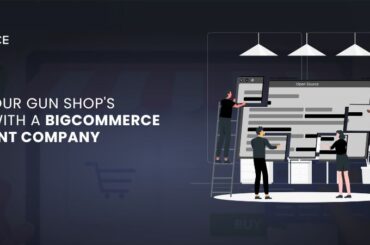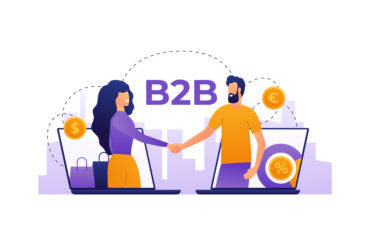A Comprehensive Guide on Integrating Afterpay with BigCommerce
Last Updated | December 1, 2023
Table of Contents
Integrating Afterpay with BigCommerce can be a game-changer for your e-commerce business. This comprehensive guide will walk you through the process, benefits, and steps involved in seamlessly incorporating Afterpay into your BigCommerce store. Discover how this integration can enhance customer experience, boost conversions, and drive growth in the ever-evolving world of online retail.
Unleashing the Power of Afterpay on BigCommerce
Online businesses are always looking for ways to improve the customer experience and increase sales. One solution is to offer a flexible payment option like Afterpay, which allows customers to pay for their purchases in interest-free installments. BigCommerce is a popular e-commerce platform that can easily integrate with Afterpay, making it a great option for businesses looking to offer this payment option. In this blog, we will explore the advantages of Afterpay and BigCommerce, as well as provide a comprehensive guide on how to integrate Afterpay with BigCommerce.
Why choose Afterpay?
Afterpay is a popular payment provider that has gained traction in recent years. It offers several advantages, including:
- Increased sales: Afterpay can lead to increased sales by providing customers with a flexible payment option.
- Higher order values: Customers are more likely to purchase more items at once when using Afterpay, which can lead to higher order values.
- Improved customer loyalty: Offering Afterpay can help businesses build customer loyalty by providing a convenient payment option.
- Zero fraud liability: Afterpay assumes all fraud liability, making it a secure payment option for businesses.
How does Afterpay work?
Afterpay allows customers to pay for their purchases in four interest-free installments, with the first installment due at the time of purchase. Customers can pay the remaining installments every two weeks. Afterpay pays the full amount to the merchant upfront and assumes all risk for fraud and non-payment.
Advantages of BigCommerce for e-commerce businesses:
BigCommerce is a powerful e-commerce platform that offers several advantages, including:
- User-friendly interface: BigCommerce is easy to use, even for those with little technical experience.
- Customization options: BigCommerce offers a wide range of customization options, allowing businesses to create a unique online store.
- Seamless integration: BigCommerce can easily integrate with a range of third-party tools, including Afterpay.
A step-by-step guide to integrating Afterpay with BigCommerce:
Here is a step-by-step guide to integrating Afterpay with BigCommerce:
- Sign up for an Afterpay account: Merchants need to sign up for an Afterpay account by visiting the Afterpay website and filling out the sign-up form.
- Install the Afterpay app on BigCommerce: Merchants can install the Afterpay app on their BigCommerce store by navigating to the BigCommerce app store and searching for “Afterpay.” They will then need to follow the prompts to install the app.
- Configure the Afterpay app settings: Once the Afterpay app is installed, merchants need to configure the settings to integrate it with their BigCommerce store. They can do so by navigating to the Afterpay app settings in their BigCommerce dashboard.
- Test the integration: After configuring the Afterpay app settings, merchants should test the integration to ensure that it is working correctly. They can do so by placing a test order and checking that the payment goes through successfully.
A Comprehensive Guide on Integrating Afterpay with BigCommerce
Best practices for using Afterpay with BigCommerce:
Here are some best practices for using Afterpay with BigCommerce:
- Promote Afterpay as a payment option: Let customers know that Afterpay is available as a payment option to increase sales and customer loyalty.
- Monitor Afterpay transactions: Keep an eye on Afterpay transactions to ensure they are going through smoothly.
- Offer discounts for using Afterpay: Encourage customers to use Afterpay by offering a discount for doing so.
How to Customize Your Afterpay Integration on BigCommerce?
| Step | Description |
|---|---|
| 1. Log In | Access your BigCommerce admin panel by logging in with your credentials. |
| 2. Access Integration | Depending on your Afterpay integration method, access the integration settings. |
| 3. Customize Widget | Customize the appearance of the Afterpay widget or button to match your store’s branding. |
| 4. Brand Messaging | Modify the text and messaging associated with the Afterpay option to align with your brand’s tone and style. |
| 5. Display Locations | Determine where the Afterpay option will be displayed, such as on product pages, in the cart, and during checkout. |
| 6. Checkout Page | Customize the appearance and placement of the Afterpay option on the checkout page to blend seamlessly with your checkout design. |
| 7. Mobile Responsiveness | Ensure that the Afterpay integration is responsive to different devices, particularly mobile devices. |
| 8. Testing | Thoroughly test the integration to ensure it works seamlessly with your store’s design and doesn’t create any issues during checkout. |
| 9. Compliance & Security | Ensure that customizations maintain the security of customer payment data and comply with payment processing regulations. |
| 10. User Experience | Consider the overall user experience, ensuring that the integration doesn’t disrupt the shopping flow or confuse customers. |
| 11. Accessibility | Make sure the Afterpay integration is accessible to all customers, including those with disabilities, following web accessibility best practices. |
| 12. Legal Requirements | Review and adhere to any legal requirements or guidelines provided by Afterpay and BigCommerce. |
| 13. Feedback & Iteration | Gather user feedback and monitor performance, making adjustments based on feedback and continuously improving the integration. |
| 14. Documentation & Support | Refer to integration documentation or seek support from Afterpay or BigCommerce in case of technical challenges. |
This table format makes it easier to visualize the steps involved in customizing your Afterpay integration on BigCommerce.
Frequently asked questions about integrating Afterpay with BigCommerce:
-
Is Afterpay available in all countries?
Afterpay is available in several countries, including Australia, the US, Canada, and the UK.
-
Does Afterpay charge any fees to customers?
No, Afterpay does not charge any fees to customers for using the service. However, customers are required to make their payments on time to avoid late fees.
-
How long does it take to receive payments from Afterpay?
Afterpay pays the full amount to the merchant upfront, so businesses do not have to wait to receive payments.
-
Can merchants refund Afterpay transactions?
Yes, merchants can refund Afterpay transactions just like any other payment method.
Maximizing Sales with Afterpay and BigCommerce:
Integrating Afterpay with BigCommerce can offer several advantages for businesses, including increased sales, higher order values, and improved customer loyalty. By following our step-by-step guide and best practices, merchants can easily integrate Afterpay with their BigCommerce store and provide a flexible payment option for their customers. With Afterpay and BigCommerce, businesses can create a seamless and convenient shopping experience for their customers, which can ultimately lead to more sales and growth for their business.









